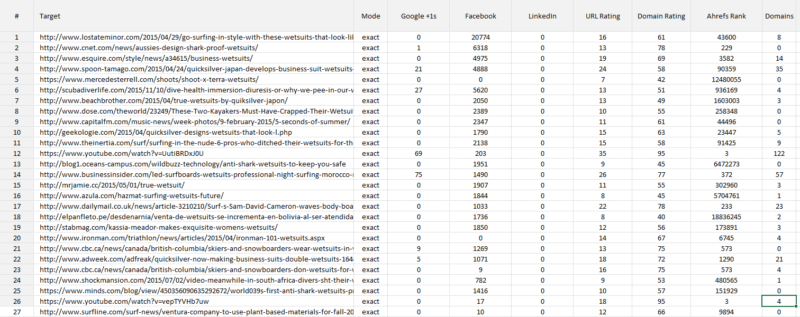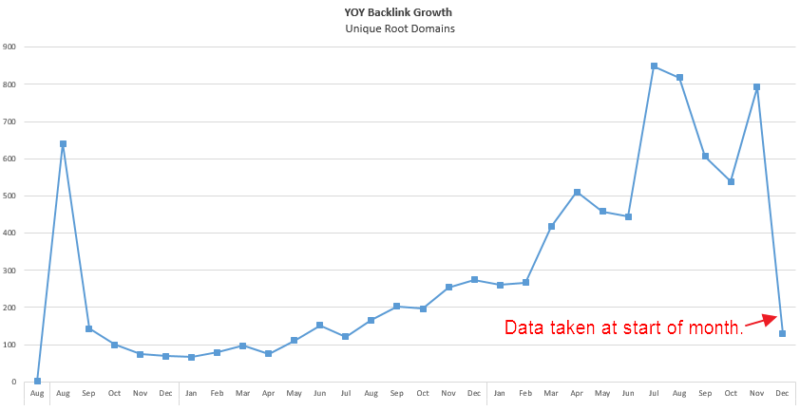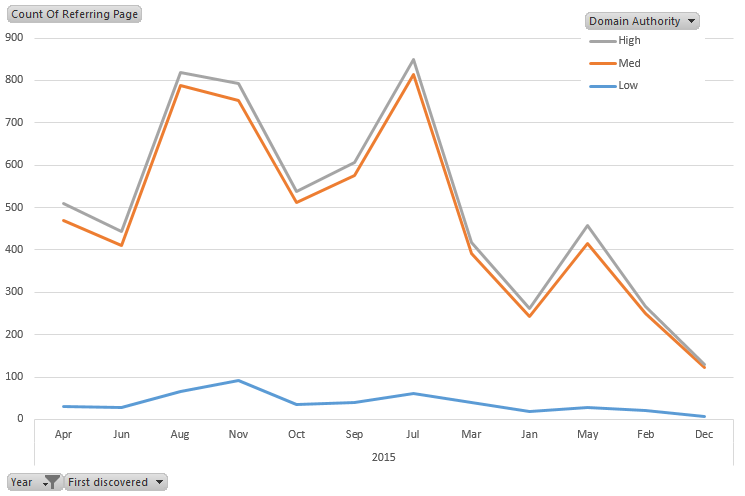Data-Led Link Building: Audience Segmentation & Analysis
Columnist Chris Liversidge explains how to use data to determine where and how to focus link-building efforts.

Link building remains the bedrock upon which long-term SEO success is built. Effectively using the wealth of data available to search marketers these days is the key to ensuring your inbound strategy beats the competition.
Let’s take a look at a few tools and data points you can use to ensure you are one step ahead in your SEO campaign. I’m particularly interested in tools that drive actionable insights over and above simply benchmarking your current performance.
Identifying High Share Audiences
At its heart, a good inbound campaign prioritizes content that is easier to outreach to its target audience. One of the best ways to ensure this with your campaign is to find and target audiences that are highly active on social channels.
BuzzSumo is a great tool for this type of analysis, as it compiles relevant metrics from the most valuable social channels and has an excellent API so you can further enhance its data. It’s also a great starting point, as its data is organized to return best-performing content — from a social perspective — by search term.
This organizational structure means you can stream BuzzSumo into your workflow at the keyphrase level. This is especially useful for tying insights derived from the tool to underperforming or strategically important search terms. In essence, the driving force for where your audience targets come from is tightly related to your overall SEO (and, if you are running an integrated campaign, PPC) keyphrase strategy.
So, for example, I may review a keyphrase gap that’s especially important to my SEO and PPC campaign from a dashboard using click-through data from AdWords and Google Search Console, like this:

Dashboard showing SERP behaviour for search terms across organic and paid search channels, as well as the conversion rate for that traffic for the landing page. [Click to enlarge.]
The term highlighted in red gets selected for improvement for a few reasons, and a number of actions are raised:
- Our average organic ranking is position 4, and positions 1–3 have exponentially higher click-through rates — so we would select this term for an inbound link-building piece.
- The click-through rate (CTR) organically on this term is lower than expected given its position, so we’ve scheduled time to review its snippet, update the on-page elements used to generate that snippet and test a better call to action (CTA).
- We are bidding that term into an efficiently-priced position three for paid search, but we are not seeing a “halo effect” general increase in CTR in either paid or organic search. In fact, the paid result is also performing lower than expected given its position — so it’s likely this ad is not complementary to the organic snippet. This ad is also scheduled for review to test a variety of CTAs that are complementary to the organic snippet.
- The landing page for this term converts at a higher rate than other related terms in this keyphrase set, despite poor CTR from the search results page. So landing pages for complementary terms are scheduled for A/B testing with this landing page format and CTA content matches.
Following on from action one above, we then insert the term into a BuzzSumo API call and grab the data for analysis. At this stage, we will have a list of URLs of content with the share, like or +1 figures for a time period.
We now know what content is socially viable, and we can run the data past a copywriter to get themes and content types that have been particularly successful for that audience type.

BuzzSumo data is matched against keyphrase terms, and the API can be used to export and cross-reference against other sources of data. Here, we see data for popular wetsuit content also using Ahrefs data for segment analysis described below. [Click to enlarge.]
Also, BuzzSumo will give us the key influencers for that content, allowing us to outreach to higher value segments of that audience in areas where we know they are already engaged.
But given that we are looking to create inbound campaigns rather than just socially successful campaigns, it’s certainly valuable to start cross-referencing the BuzzSumo data with other sources of information. This will give us a better understanding of how the highlighted content performed from a link-building perspective.
To achieve this cross-referencing of success measurement, pull in data for each of the BuzzSumo URLs with data from Ahrefs to get an idea of the performance of the links over time. This helps us understand if the high-performing links surfaced in BuzzSumo are high-scoring due to longevity or not. This influences the content type and setting of success measurement KPIs.

Understanding the link value over time for socially successful links helps refine your target audience and content better to those audiences that generate high-quality links over time versus just social amplification.
In the above graph, I’ve further refined my analysis by looking at growth of linking domains over time, rather than just links, to help my team prioritize content that captures links from a variety of locations, rather than just high-link-volume domains.
In addition, as we have information on link and domain authority from Ahrefs, we can build that segment into our histogram analysis to find the higher-authority domains that also generate further domain-link diversity over time.

Understanding how links collate against a socially successful piece of content over time is valuable to understand the type of outreach required for success for a given piece of content.
Because we use the API to collate our data, we can load it into Excel easily and pivot-chart our histogram as you see above. Highlighting the higher-value domains that link early on with content helps target our outreach for our own content for this audience.
We can also assess the longevity of content under review to establish if high burst activity at the outset is required to gain traction with the high-value linking domains.
Finally, to help more usefully compare the performance of different pieces of content within the same audience, I find it useful to build on the excellent “Estimated True Value” work explained here by Dr. Pete.
In essence, we can use the same technique to better weight what’s important for comparison, filtering out “extremes” from our data to show what is truly significant.

Calculating the Estimated True Value makes the analysis of content more meaningful by filtering out extreme cases. [Click to enlarge.]
I’ll dig into how this can be calculated and used in a follow-up post next month. There’s already more than enough data attribution work at this stage for you to better use data to target the right content to the best value audiences to drive SEO campaigns more efficiently. Until next time, Merry Christmas!
Contributing authors are invited to create content for Search Engine Land and are chosen for their expertise and contribution to the search community. Our contributors work under the oversight of the editorial staff and contributions are checked for quality and relevance to our readers. The opinions they express are their own.
Related stories